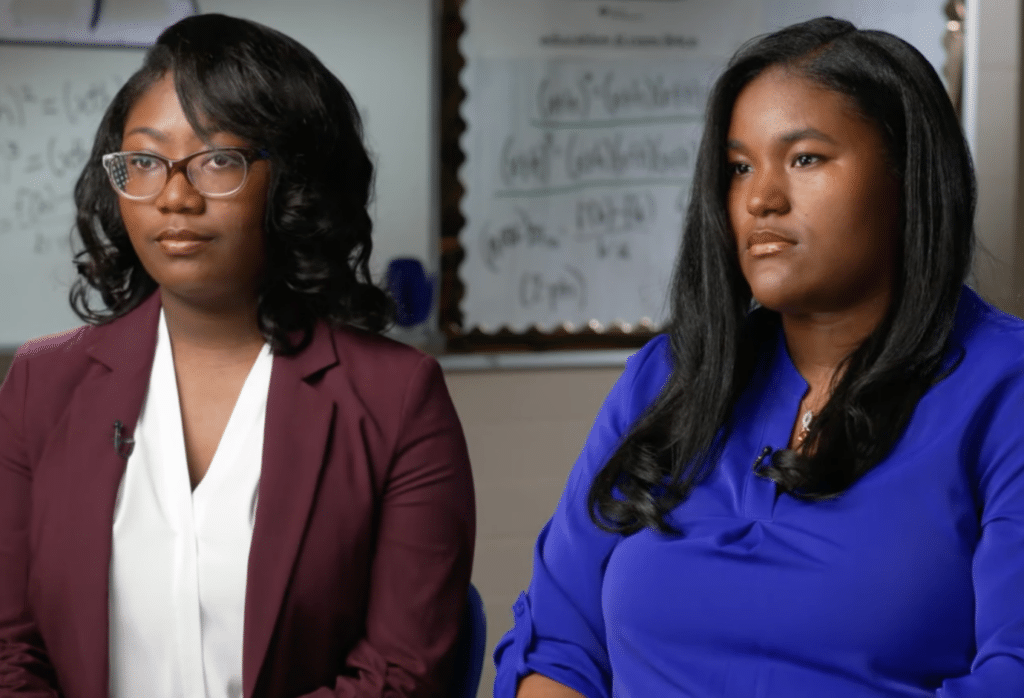Two high school students from the US have derived a new proof for the Pythagorean Theorem using trigonometry. Before it became the fundamental principle of geometry, the famous mathematical puzzle was considered impossible to prove using the branch of mathematics involving angles and their application for 2,000 years.
Calcea Johnson and Ne’Kiya Jackson, students at St. Mary’s Academy, an all-girls Catholic high school in New Orleans, solved the maths problem during a competition in late 2022, when they were asked to create a new proof of the Pythagorean Theorem.
The students were given a few guidelines on how they could start a proof. The math competition was run by the school, and also came with a cash prize.
Ne’Kiya Jackson said she was keen to compete for the prize money. Johnson agreed. “I was like, “$500 is a lot of money. So I would like to at least try,” she said.
The pair spent two months working on the proof. The only other documented proof of the theorem using trigonometry by a mathematician was by science entrepreneur and author Jason Zimba in 2009.
There have been more than 300 documented proofs of the Pythagorean Theorem using algebra and geometry, but no proof using trigonometry — until Zimba in 2009, and now, Johnson and Jackson. Johnson said she was motivated to finish the problem — “I think I was like, “I started something,” she said. “I need to finish it.”
Her mother CeCe Johnson said her daughter struggled, but was persistent and determined to solve the problem.
“The garbage can was full of papers, which she would, you know, work out the problems,” Cal Johnson, her father, said. “If that didn’t work she would ball it up, throw it in the trash.”
Michelle Blouin Williams, the maths teacher who initiated the contest, said she didn’t think any of her students would solve the problem.
“I wasn’t necessarily looking for a solve,” she said. “I was just looking for some ingenuity.”
But when she encouraged her two star students to present their proofs at an American Mathematical Society conference in March last year, their presentation “blew up.”
“[It was] insane, unexpected, crazy, honestly,” Johnson said.
Even Michelle Obama celebrated their success — writing in a post: “I just love this story about two high school students, Calcea Johnson and Ne’Kiya Jackson, who are on the cusp of an incredible mathematical discovery. Way to go, Ne’Kiya and Calcea! I’m rooting for you and can’t wait to see what you all do next.”
When asked why their achievement drew such ardour, Jackson replied, “Probably because we’re African American, and we’re also women. So I think– oh, and our age. Of course our ages probably played a big part.”
“I’d like to actually be celebrated for what it is. Like, it’s a great mathematical achievement.”
St. Mary’s president and interim principal, Pamela Rogers, said she believes that all students can succeed and learn. “It does not matter the environment that you live in,” she said.
Rogers said there were some people who didn’t believe the students could have solved the problem themselves.
“They were saying, “Oh, they could not have done it. African Americans don’t have the brains to do it.” Of course, we sheltered our girls from that. But we absolutely did not expect it to come in the volume that it came.”
“People have a vision of who can be successful,” she added. “And to some people, it is not always an African American female. And to us, it’s always an African American female.”
Ne’Kiya is now studying pharmacy at Xavier University in New Orleans, while Calcea, the class valedictorian, is majoring in environmental engineering at Louisiana State University. Neither wanted to study math full time.
“I may take up a minor in math, but I don’t want that to be my job job,” Johnson said. “People might expect too much out of me if I become a mathematician.”
The pair have since uncovered five more proofs, which they revealed in a 60 Minutes interview over the weekend. “We found five, and then we found a general format that could potentially produce at least five additional proofs,” Johnson said.


